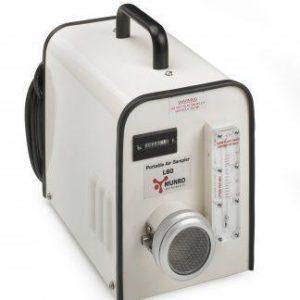Air Quality Sensors / Air Quality Monitors
Air quality refers to the condition and characteristics of the air surrounding us. Air quality has an impact on many aspects of our life on earth including health, well-being and climate change. There are a number of situations in which the immediate safety of nearby life depends on ensuring atmospheric gas concentrations do not exceed certain levels that could lead to explosion or poisoning.
MUNRO-Air Quality
Munro Instruments supplies sensors to monitor a number of parameters relating to both indoor and outdoor air quality. These include particulates, Volatile Organic Compounds (VOCs), Carbon Dioxide, Carbon Monoxide, Nitrogen Dioxide, Sulphur Dioxide, Methane and Hydrogen Sulphide.
Our range of air samplers provide an accurate method of determining particulate mass concentration. They are used widely in the nuclear, chemical, construction and agricultural industries.
Exposure to particulate matter can have a serious effect on human health and the environment. Our range of air samplers provide an accurate method of determining particulate mass concentration. They are used widely in the nuclear, chemical, construction and agricultural industries.
Large Volume Air Samplers
Large volume air samplers are vital tools used in environmental monitoring and industrial hygiene to assess air quality and identify pollutants. These sophisticated instruments play a crucial role in safeguarding public health and environmental sustainability.
Monitoring air quality
Air quality is a significant concern for public health and environmental protection. Large volume air samplers provide accurate data on air pollutants, helping regulatory agencies and researchers monitor trends and assess the effectiveness of pollution control measures.
Identifying pollutants
Large volume air samplers enable the collection and analysis of airborne contaminants such as particulate matter, volatile organic compounds (VOCs), and heavy metals. By identifying the sources and concentrations of pollutants, decision-makers can implement targeted interventions to mitigate environmental impacts.
Applications of Large Volume Air Samplers
- Air Quality Monitoring: Large volume air samplers are important in monitoring ambient air quality in urban, industrial, and rural areas. They can collect airborne pollutants such as particulate matter (PM10, PM2.5), nitrogen oxides (NOx), sulfur dioxide (SO2), volatile organic compounds (VOCs), and heavy metals. This data is vital for assessing compliance with air quality standards and identifying sources of pollution.
- Source Apportionment Studies: Understanding the sources of air pollution is essential for developing effective mitigation strategies. it can help researchers identify and quantify contributions from various pollution sources such as vehicular emissions, industrial activities, agricultural operations, and natural sources like wildfires. This information guides policymakers in implementing targeted control measures.
- Health Impact Assessments: Airborne pollutants have significant implications for public health, contributing to respiratory diseases, cardiovascular problems, and other health issues. Large volume air samplers aid in assessing the exposure of communities to harmful pollutants, enabling epidemiological studies to investigate associations between air quality and health outcomes. This data informs public health policies and interventions aimed at reducing health risks associated with air pollution.
- Atmospheric Deposition Studies: Used to collect atmospheric deposition, including particulate matter and trace elements, onto surfaces such as soil, water bodies, and vegetation. These studies help scientists understand the transport and deposition of pollutants in the environment, their impact on ecosystems, and potential risks to human health through contaminated food and water sources.
- Climate Change Research: Certain atmospheric constituents, such as greenhouse gases and aerosols, contribute to climate change. Large volume air samplers aid in measuring concentrations of greenhouse gases like carbon dioxide (CO2), methane (CH4), and nitrous oxide (N2O), as well as aerosols such as black carbon and sulfate particles. This data is crucial for understanding the role of atmospheric constituents in climate dynamics and assessing the effectiveness of mitigation efforts.
- Industrial Emissions Monitoring: Industries that release airborne pollutants as byproducts of their operations are required to comply with regulatory emission standards. Large volume air samplers are employed for continuous monitoring of industrial emissions, enabling companies to assess their environmental impact, identify areas for improvement, and ensure compliance with air quality regulations.
- Research and Development: Large volume air samplers are also utilized in research and development projects aimed at studying air pollution processes, investigating emerging pollutants, developing new sampling methodologies, and evaluating the effectiveness of pollution control technologies. These advancements contribute to ongoing efforts to mitigate air pollution and protect public and environmental health.

Contact Us






